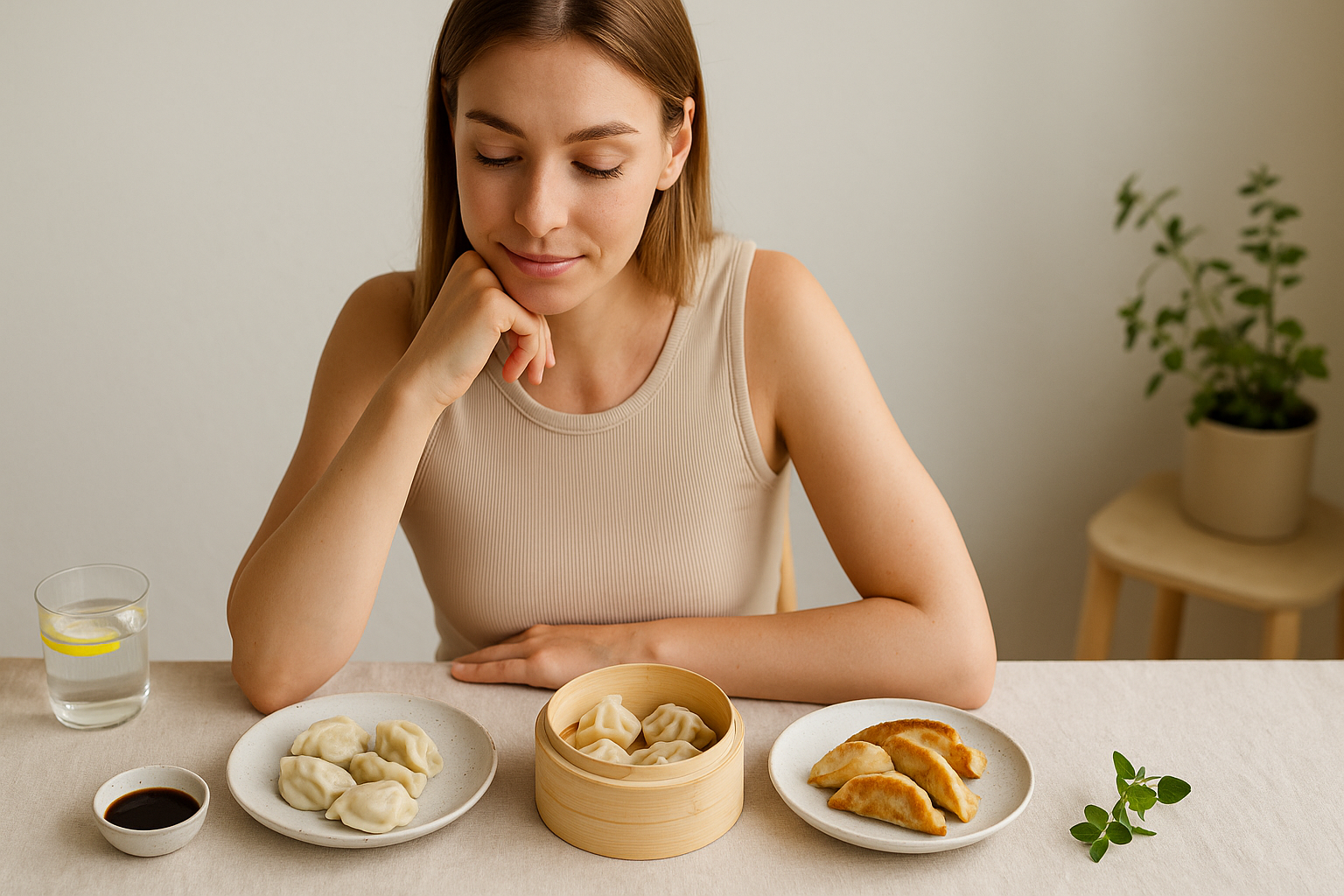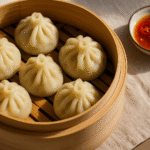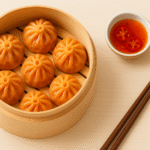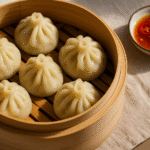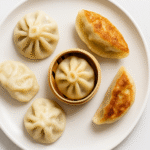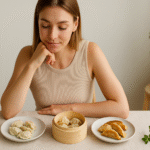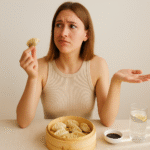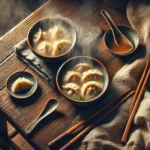Dumplings may look small, but the way you cook them makes a surprisingly big difference to their nutrition. A few drops of oil, a change in temperature, or just a few extra minutes in the pan can transform them from a light, balanced meal into a calorie-heavy indulgence.
Whether you love the soft chew of steamed dumplings, the crisp bite of pan-fried potstickers, or the comforting simplicity of boiled versions, the question remains: which type is healthiest? Let’s take a closer look at what really changes when dumplings meet water, steam, or oil.
Steamed Dumplings — Clean, Light, and Balanced
If you’re after the healthiest way to enjoy dumplings, steaming is the clear winner. Steamed dumplings preserve the natural flavor and nutrition of the filling without requiring extra fat or oil. Because they’re cooked gently, they retain moisture without soaking up excess calories or losing nutrients.
A serving of five steamed dumplings contains around 200 calories, with roughly 10 to 12 grams of protein, 20 to 25 grams of carbohydrates, and only 6 to 8 grams of fat. They’re an excellent option for people looking to eat clean, maintain a healthy weight, or reduce sodium intake.
Steamed dumplings are also versatile — they work beautifully with lean proteins like shrimp, chicken, or tofu and can be easily balanced with vegetables or soups. If you’re making them at home, our step-by-step guide How to Make Perfect Dumplings: Common Mistakes and Expert Tips will help you master the art of folding and steaming without tearing the wrappers.
Boiled Dumplings — Comforting but Carb-Heavy
Boiled dumplings sit comfortably in the middle of the health spectrum. Since they’re cooked in water, they don’t absorb any oil — which keeps their fat content relatively low — but they can absorb moisture, making them heavier and sometimes less flavorful. They may also lose some nutrients into the cooking water.
A serving of five boiled dumplings usually ranges from 210 to 230 calories, similar to steamed dumplings. However, because of their softer, denser texture, they can feel more filling. The biggest concern comes from what you eat them with — soy-based dipping sauces and salty broths can easily double your sodium intake.
Still, boiled dumplings can be a comforting, balanced option when made with wholesome ingredients. Opt for lean fillings, keep sauces light, and consider pairing them with steamed greens or miso soup for a more complete and nutritious meal.
Pan-Fried Dumplings — Crispy, Flavorful, and Indulgent
Pan-fried dumplings, also known as potstickers, are often the crowd favorite for their golden crust and rich flavor. The crisp exterior and tender interior make them irresistible — but that comes at a nutritional cost.
Pan-frying adds 50 to 70 extra calories per dumpling, depending on how much oil is used. A five-piece serving can easily reach 280 to 300 calories, with nearly double the fat of steamed versions. The oil gives them their signature crisp texture but also increases their calorie density.
Still, they can be part of a healthy diet if enjoyed in moderation. Try using a non-stick pan with minimal oil, or use the steam-fry method — a technique that combines light frying and steaming to create texture without excessive fat. For detailed instructions, see The Secret to Perfect Pan-Fried Dumplings.
Comparing the Three
When it comes to calories and fat, the differences are clear. Steamed dumplings are the lightest, offering clean flavor and minimal oil. Boiled dumplings are slightly denser but still low in fat, while pan-fried dumplings are higher in calories due to oil absorption.
If your goal is balanced nutrition, steaming wins. Boiling is a good second choice — especially if you enjoy dumplings in a light broth or soup. Pan-fried dumplings, on the other hand, are best reserved for moments of indulgence, where taste takes priority over calorie counting.
For a balanced approach, consider mixing and matching — two pan-fried for texture and three steamed for balance. That way, you enjoy variety without overdoing it.
How to Make Any Dumpling Healthier
No matter how you cook them, you can always make dumplings healthier with a few simple changes. Choose lean proteins such as shrimp, chicken, or tofu, and add chopped vegetables like cabbage, mushrooms, or spinach for extra fiber and vitamins. Use whole wheat wrappers instead of white flour to boost nutrients, and go easy on salty sauces — vinegar, chili, or sesame oil are lighter alternatives that still deliver flavor.
For a deeper dive into why dumplings can be a smart choice in moderation, explore The Surprising Health Benefits of Eating Dumplings — Yes, Really. It explains how dumplings can fit perfectly into a mindful, balanced lifestyle when prepared thoughtfully.
The Verdict
So, which dumplings are healthiest? The answer depends on your priorities. Steamed dumplings are your best bet for a light, nutritious meal that won’t weigh you down. Boiled dumplings are a comforting alternative when you want something soft and hearty without added fat. And pan-fried dumplings — crispy, golden, and irresistible — are best enjoyed occasionally as a treat rather than an everyday habit.
Ultimately, dumplings don’t need to be perfect to be healthy — they just need balance. Whether you steam, boil, or fry, the key lies in portion control, smart ingredients, and mindful enjoyment. That way, every dumpling can still be part of a delicious, health-conscious life.
